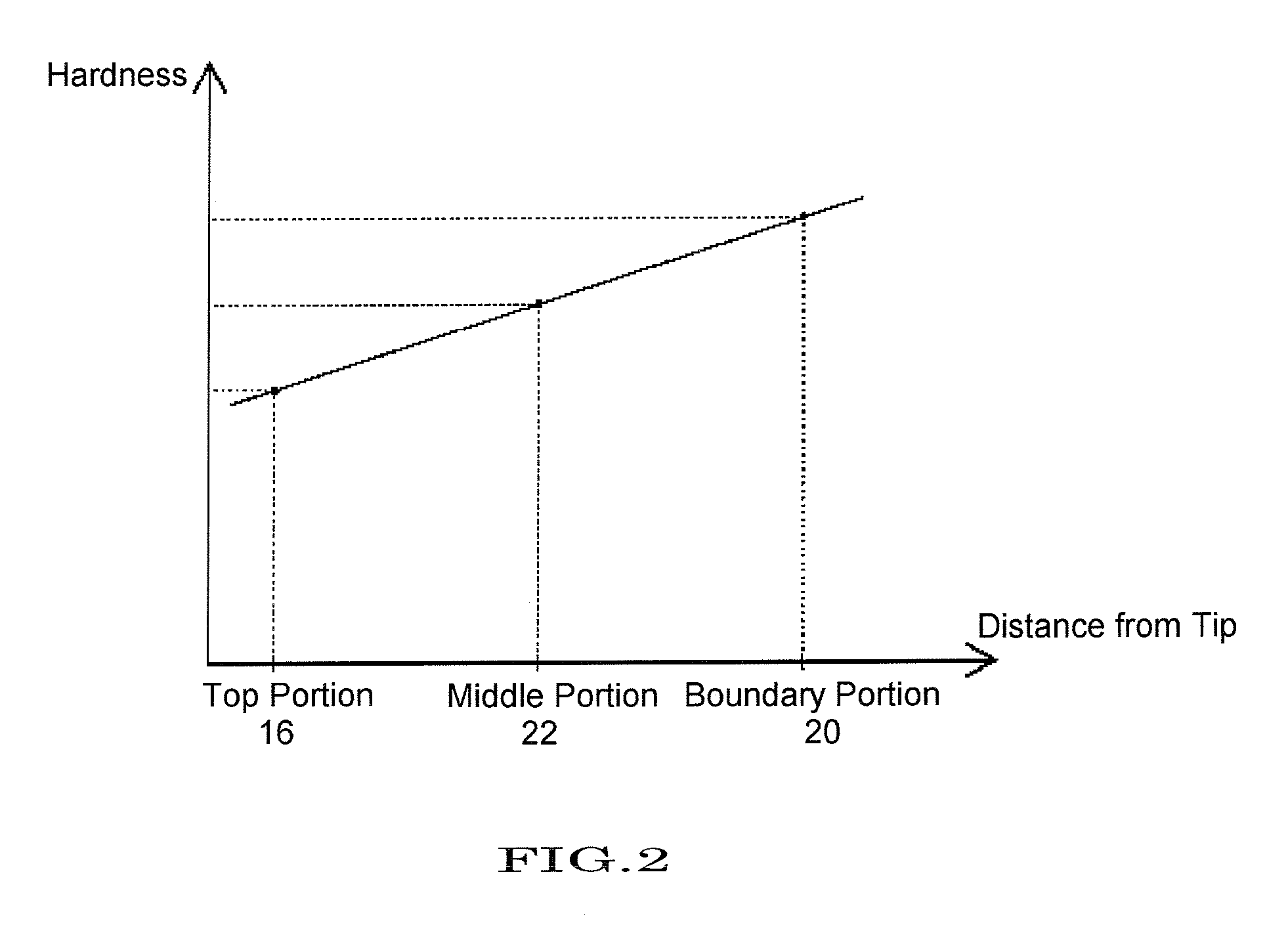Stick-Shaped Solid Cosmetics and Method for Producing the Same
a solid cosmetic and stick technology, applied in the field of stick-shaped solid cosmetics, can solve the problems of poor product quality, complicated structure, limited blending method of specific components, etc., and achieve the effect of excellent product strength and smooth spreadability
- Summary
- Abstract
- Description
- Claims
- Application Information
AI Technical Summary
Benefits of technology
Problems solved by technology
Method used
Image
Examples
example 1
(Conditions for the Measurement of Penetration Hardness)
[0065]Samples stored at 25° C. were measured with a FUDOH rheometer (Rheotech Co., Ltd.) under the conditions of the penetrator diameter of 1 mm, penetration of 3 mm, and the rise velocity of 2 cm / min. The penetration hardness is shown with the measured maximum stress value (force on the penetrator) at the penetration depth of 0 to 3 mm.
(Hardness Measurement of Stick-Shaped Solid Cosmetics)
[0066]The hardness measurement for stick-shaped solid cosmetics was conducted in the following way. A stick-shaped solid cosmetic (sections outside the inner holder) is cut along a plane perpendicular to the central axis. Under the above-described hardness measurement conditions, a cylindrical penetrator is vertically (perpendicular to the cut surface) penetrated at the central axis of the cut surface. The measurement was conducted for the top portion, the middle portion, and the boundary portion of the stick-shaped solid cosmetic, respective...
example 2
[0102]Based on the above-described production method, compositions with various hardness were prepared, and the preferable hardness and the preferable hardness difference were investigated. The hardness for Phase A and Phase B is the hardness before the stick-shaped solid cosmetic is molded.
TABLE 2Test Examples1-11-21-31-4Hardness of phase A (N)0.020.050.100.15Hardness of phase B (N)0.250.250.300.35Hardness difference between0.230.200.200.20Phase A and B (N)Hardness of top portion (N)0.060.070.140.21Hardness of middle portion (N)0.130.150.200.24Hardness of boundary portion (N)0.210.230.270.31Hardness difference between top0.150.160.130.10and boundary portion ΔN (N)Hardness difference between top0.070.080.060.03and middle portion ΔN′ (N)ΔN′ / ΔN47%50%46%30%(I)Product strengthXΔ◯◯(II)Smoothness2.01.81.61.4(III)Uncomfortable feeling0000
TABLE 3Test Examples1-51-61-7Hardness of phase A (N)0.250.300.35Hardness of phase B (N)0.450.500.55Hardness difference between0.200.200.20Phase A and B (N...
example 3
[0105]Stick-shaped solid cosmetics were produced using Phase A with the hardness of 0.15 N and Phase B with the hardness of 0.40 N, and the desirable volume ratio of the two phases was investigated.
TABLE 6Test Examples2-12-22-32-42-52-6Ratio of Phase A (%)405062718390Ratio of Phase B (%)605038291710Phase B / Phase A1.51.00.60.40.20.1(I) Product strength◯◯◯◯ΔX
[0106]From the results of Table 6, it was found that the volume ratio of Phase B to Phase A was preferably 0.2 or higher, and more preferably 0.4 to 1.5.
PUM
| Property | Measurement | Unit |
|---|---|---|
| melting point | aaaaa | aaaaa |
| volume ratio | aaaaa | aaaaa |
| diameter | aaaaa | aaaaa |
Abstract
Description
Claims
Application Information
 Login to View More
Login to View More - R&D
- Intellectual Property
- Life Sciences
- Materials
- Tech Scout
- Unparalleled Data Quality
- Higher Quality Content
- 60% Fewer Hallucinations
Browse by: Latest US Patents, China's latest patents, Technical Efficacy Thesaurus, Application Domain, Technology Topic, Popular Technical Reports.
© 2025 PatSnap. All rights reserved.Legal|Privacy policy|Modern Slavery Act Transparency Statement|Sitemap|About US| Contact US: help@patsnap.com



